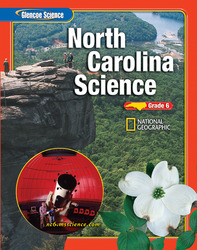1 A) The Sun is the only source of radiation. B) Convection takes place most easily in solids. C) Convection does not occur naturally. D) When heat is transferred by conduction, particles collide but remain in the same location. 2 A) increases, rises B) decreases, rises C) decreases, falls D) increases, falls 3 A) At 0°C, molecules have no kinetic energy. B) The equation for converting from Celsius to Kelvin is: °C = K + 273. C) Absolute zero is equal to 0°Celsius. D) Absolute zero is the lowest possible temperature. 4 A) insulator B) current C) fluid D) conductor 5 A) 68 B) 77 C) 70 D) 46 6 A) Heat B) Kinetic energy C) Work D) Potential energy 7 A) 1000 J/(kg K) B) 50 J/(kg K) C) 100 J/(kg K) D) 10 J/(kg K) 8 A) potential energy B) average kinetic energy C) temperature D) total energy 9 A) Molecular collisions cause the liquid to expand. B) As the kinetic energy of the liquid decreases, its volume increases. C) The pressure of the surrounding material increases the potential energy of the liquid. D) Forced convection occurs and the level of the liquid rises. 10 A) solids and liquids B) solids and gases C) liquids and gases D) gases and plasmas 11 A) heat engine B) generator C) heat pump D) refrigerator 12 A) Density B) Radiation C) Temperature D) Conduction 13 A) snow melting in your hand B) water boiling in a copper teakettle C) rain forests near the equator D) Earth heated by the Sun 14 A) cooler to warmer objects B) solids to gases C) solids to liquids D) warmer to cooler objects 15 A) be used in refrigerators B) move thermal energy into or out of a building C) only move thermal energy into a building D) only move thermal energy out of a building 16 A) can be either created or destroyed by a heat pump B) cannot be created or destroyed by a heat pump C) only is created in a heat pump D) only is destroyed in a refrigerator 17 A) Chemical B) Molecular C) Nuclear D) Radiant 18 A) 0° B) 32° C) 100° D) absolute zero 19 A) a coolant B) chemical energy C) convection D) heat engines 20 A) expand B) contract C) release heat D) create energy














